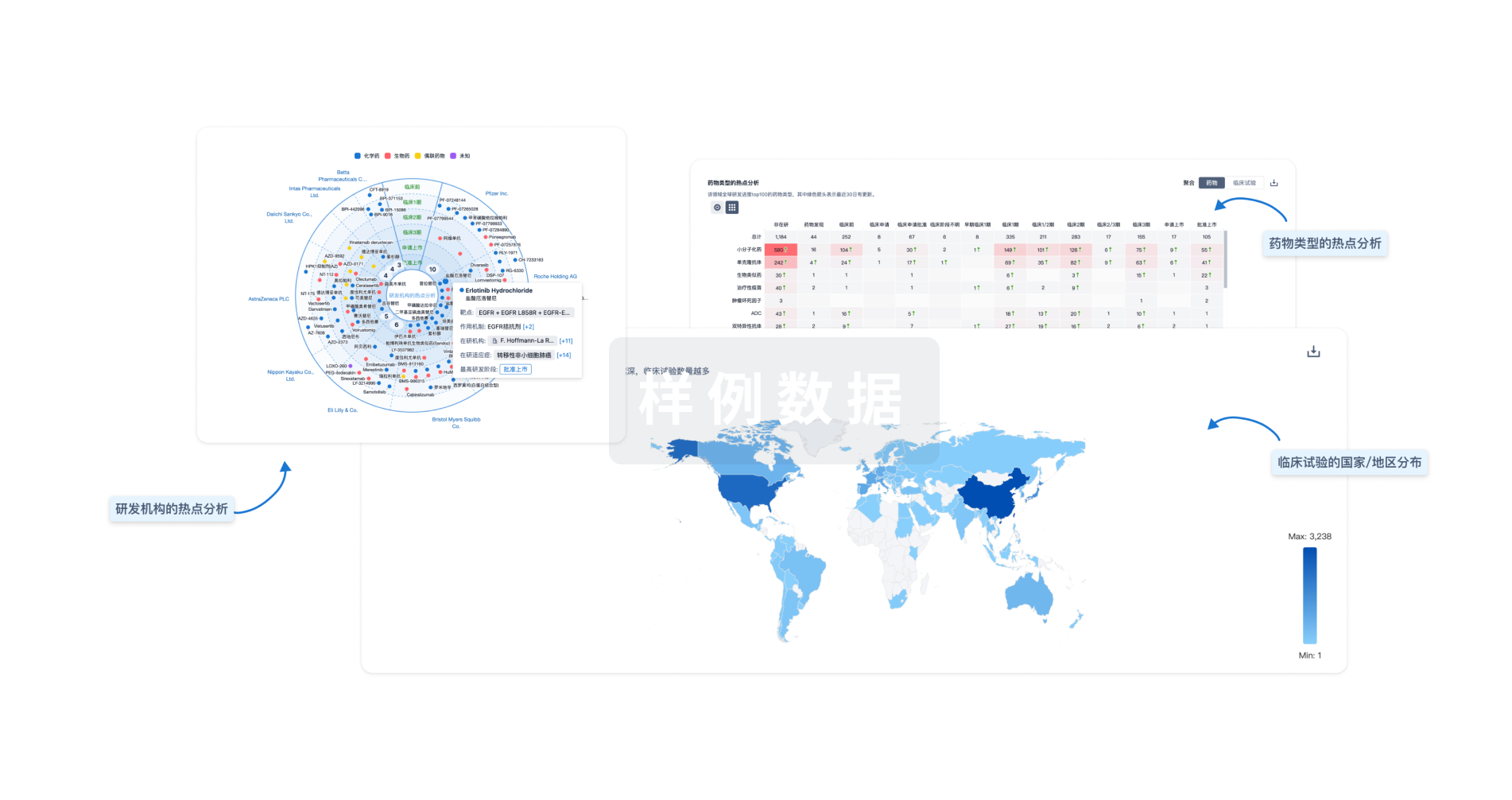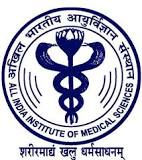预约演示
更新于:2025-05-07
Measles
麻疹
更新于:2025-05-07
基本信息
别名 MEASLE、MEASLES、Measles + [22] |
简介 A highly contagious infectious disease caused by MORBILLIVIRUS, common among children but also seen in the nonimmune of any age, in which the virus enters the respiratory tract via droplet nuclei and multiplies in the epithelial cells, spreading throughout the MONONUCLEAR PHAGOCYTE SYSTEM. |
关联
79
项与 麻疹 相关的药物靶点- |
作用机制- |
非在研适应症- |
最高研发阶段批准上市 |
首次获批国家/地区 日本 |
首次获批日期2025-01-24 |
靶点- |
作用机制 免疫调节剂 |
在研机构 |
原研机构 |
非在研适应症 |
最高研发阶段批准上市 |
首次获批国家/地区 中国 |
首次获批日期2020-06-23 |
靶点- |
作用机制 免疫刺激剂 |
在研机构 |
原研机构 |
在研适应症 |
最高研发阶段批准上市 |
首次获批国家/地区 澳大利亚 |
首次获批日期2015-04-16 |
196
项与 麻疹 相关的临床试验CTRI/2025/04/085165
Evaluation of efficacy of add on oral amantadine in children and adolescents with subacute sclerosing panencephalitis aged less than 18years: A randomized controlled trial - nil
开始日期2025-05-21 |
NCT06920069
Phase IV Study of Evaluating Immunogenicity and Safety of Concomitant Administration of Sabin-strain-based Inactivated Poliovirus Vaccine (Vero Cells) and Adsorbed Acellular Pertussis, Diphtheria and Tetanus Combined Vaccine or Measles, Mumps and Rubella Combined Live-attenuated Vaccine
This study is a randomized, open-labeled phase IV clinical trial to evaluate the immunogenicity and safety of concomitant administration of sIPV and DTaP or MMR in infants aged 2 months. Primary immunogenicity endpoints in all groups include the seroconversion rate of type I, II, and III anti-poliovirus neutralizing antibodies, anti-DT, anti-TT, anti-PT, anti-FHA, and anti-PRN antibodies 30 days after basic immunization. Secondary immunogenicity endpoints include the seropositive rates, seroconversion rates, geometric mean titer/concentration (GMT/GMC), geometric mean fold increase (GMFI) of type I, II, and III anti-poliovirus neutralizing antibodies, anti-DT, anti-TT, anti-PT, anti-FHA, and anti-PRN antibodies, and anti-measles, anti-mumps, and anti-rubella antibodies 30 days after full immunization. The secondary safety endpoints are the incidence of adverse events (AEs) within 30 minutes after each injection, the incidence of solicited local and systematic AEs in the period of solicitation after each injection, the incidence of unsolicited AEs in 30 days after each injection, the incidence of AEs in 30 days after each injection, and the incidence of serious adverse events in 6 months after administrations.
开始日期2025-05-15 |
申办/合作机构 |
NCT06855160
A Phase 3a, Open-Label, Randomized, Controlled Study to Evaluate the Immunogenicity and Safety of Intramuscular Administration of an Investigational Varicella Vaccine and Priorix Compared With Subcutaneous Administration of Varivax and Priorix, When Given as a First Dose to Healthy Children 12 to 15 Months of Age
This study aims to assess the immune response and safety of GSK's candidate chickenpox and marketed MMR vaccines when given to children 12 to 15 months of age via a muscle injection. It compares the GSK vaccines to Merck's chickenpox vaccine, administered just under the skin. Additionally, the study will evaluate the immune response and safety of giving the GSK vaccines along with other childhood vaccines through a muscle injection.
开始日期2025-04-21 |
申办/合作机构 |
100 项与 麻疹 相关的临床结果
登录后查看更多信息
100 项与 麻疹 相关的转化医学
登录后查看更多信息
0 项与 麻疹 相关的专利(医药)
登录后查看更多信息
21,027
项与 麻疹 相关的文献(医药)2025-12-31·Journal of Biological Dynamics
Modelling measles transmission dynamics and the impact of control strategies on outbreak Management
Review
作者: Peter, Olumuyiwa James
2025-12-31·Human Vaccines & Immunotherapeutics
Visual analysis of the research frontiers, hotspots and development trends of immunization programs for women and children
Article
作者: Zhang, Litao ; Zhang, Yuqing ; Zhang, Yani ; Zhou, Jianping ; Li, Mu ; Wang, Jiaxing ; Zhang, Jiachen ; Zhang, Bo ; Zhang, Ruochen ; Qu, Xinheng
2025-12-31·Pulmonology
Vaccination in post-tuberculosis lung disease management: A review of the evidence
Review
作者: Rommasi, F. ; Tajabadi, Z. ; Silva, D.R. ; Solovic, I. ; Rabahi, M.F. ; Nasiri, M.J. ; Centis, R. ; van den Boom, M. ; Khelghati, F. ; Sotgiu, G. ; Sarmastzadeh, T. ; Zahmatkesh, M.M. ; D'Ambrosio, L. ; Tadolini, M. ; Marconi, L. ; Migliori, G.B. ; de Queiroz Mello, F.C. ; Pontali, E. ; Galvão, T. ; Bombarda, S. ; Tiberi, S. ; Dalcolmo, M.P.
695
项与 麻疹 相关的新闻(医药)2025-05-02
·药时空
本文聚焦微针经皮疫苗接种技术,介绍了疫苗接种的重要性、传统接种方式的局限,阐述微针技术原理、类型(如固体、空心、涂层微针等)及优势(如便捷、高效、热稳定性好),分析其在不同疫苗中的应用、面临的技术挑战(如安全、制造等问题),探讨未来发展前景,展现出该技术在疫苗接种领域的变革潜力。一、疫苗接种:守护健康的关键防线疫苗接种是现代预防医学对抗传染病的有力武器,每年能预防 200 - 300 万人死亡,潜在可避免 350 - 500 万人死亡 。疫苗通过激发人体免疫反应,产生抗体对抗病原体,其种类多样,包括全病原体、亚单位、基因构建体和病毒载体疫苗等 。不过,当前疫苗接种面临诸多挑战,如冷链成本高昂、针头相关风险(像医护人员针刺伤、公众对针头的恐惧)以及口服疫苗的胃肠道降解问题等。疫苗接种途径主要有肠胃外给药(如肌肉、皮下、皮内注射)和黏膜给药(如鼻内、口服、直肠给药)(图 1)。肠胃外给药生物利用度高,但有诸多弊端;黏膜给药能激发黏膜和全身免疫,但也存在问题,比如口服疫苗易被胃肠道降解 。二、皮肤:疫苗接种的新战场皮肤不仅是人体的天然屏障,还具备强大的免疫功能 。其包含多种免疫细胞,如朗格汉斯细胞和树突状细胞,这些细胞能捕捉和呈递抗原,启动免疫反应 (图 2)。然而,皮肤的角质层阻碍了大多数药物和疫苗的穿透,传统皮内注射虽免疫原性强,但存在诸多问题,如引起疼痛、操作不精准等,这促使了创新给药方法的研发。三、微针技术:疫苗接种的创新之光微针技术是一种创新的疫苗递送系统,其灵感源自爱德华・詹纳的皮内接种策略 。微针高度在 50 - 2000μm 之间,能有效穿透角质层,将抗原精准递送至表皮和真皮组织,激活免疫细胞,引发免疫反应 。自 20 世纪 90 年代中期开始系统研究以来,微针技术发展迅速,多种微针类型不断涌现(图 3)。(一)微针的多样类型及特点固体微针作为第一代经皮递送系统,通过 “扎刺 - 贴片” 机制创建微观通道,引导药物渗透 。在多种疫苗递送中表现出色,可增强免疫原性,但存在需要两步给药、可能残留金属等问题 。空心微针类似微型注射针,通过内部通道输送药物,能实现较大体积药物的连续给药 。不过,其制造复杂,使用中可能出现堵塞、渗漏和针头断裂等问题 。涂层微针在固体微针结构上涂覆治疗剂,具有快速释药、生物利用度高的优势 。但涂层药物分布不均、载药量有限,临床转化面临挑战 。溶解微针由水溶性、生物可降解材料制成,“扎刺 - 释放” 过程简单,能持续释放药物,且稳定性好,可在常温下保存疫苗 。不过,其载药量也有一定限制 。膨胀微针能通过控制溶胀机制给药,还可用于诊断,吸收间质液获取生物标志物 。在疫苗接种方面的应用还需进一步研究 。多孔微针具有微 / 纳米级通道网络,载药能力强 。但材料成本高、制造工艺复杂,阻碍了其大规模应用 (图 4)。(二)微针接种的显著优势微针接种相比传统针头注射器有诸多优势 。它能减少神经刺激,实现无痛给药,降低职业安全风险,方便自我给药,尤其适合资源有限地区 。同时,微针可优化剂量,提高免疫原性,增强疫苗稳定性,减少冷链依赖 。(三)微针接种面临的挑战尽管微针技术前景广阔,但仍面临不少挑战 。在安全方面,疫苗生产和储存的质量控制、灭菌过程对疫苗完整性的影响以及皮肤免疫反应引发的局部反应等问题需要解决 。此外,疫苗稳定性、载药量以及制造过程中的材料浪费等问题也亟待攻克 。四、微针在不同疫苗中的应用成果微针技术适用于多种疫苗,包括活减毒疫苗、灭活疫苗、基于病原体成分的疫苗(如 DNA 疫苗、RNA 疫苗、蛋白亚单位疫苗、病毒样颗粒疫苗)等 。研究表明,微针接种在多种疾病疫苗(如麻疹、脊髓灰质炎、结核病、HIV、流感、COVID - 19)中都展现出良好效果,能产生与传统接种方式相当甚至更优的免疫反应 。五、微针技术的综合考量安全性微针接种后皮肤屏障通常在 48 小时内恢复,但对老年和免疫缺陷人群的安全性仍需进一步研究 。材料选择对安全性影响重大,聚合物材料相对更安全 。有效性纳米载体介导的微针疫苗递送可增强免疫效果,选择合适的佐剂也能提升免疫反应 。不过,目前缺乏统一的评估标准,免疫机制也有待深入研究 。可接受性患者对微针接种的接受度较高,尤其是自我给药的便利性备受青睐 。但皮肤并发症、公众认知度等问题限制了其广泛应用 。成本效益微针接种在整个疫苗价值链上具有成本优势,可降低冷链、医疗废物处理和人员培训等成本 。经济分析显示,其有望节省大量成本 。施用器和佩戴时间微针接种需要精确的施用器确保穿透效果,不同微针类型的佩戴时间差异较大 。在商业化前,还需解决安全评估、热稳定性等一系列问题 。微针尺寸微针的尺寸对皮肤穿透效率和药物递送效果至关重要 。但由于治疗药物、病理条件和个体皮肤差异,目前难以确定标准化的微针结构 。微针制造多家公司正在研发微针疫苗产品,但制造过程面临优化和成本控制的挑战,灭菌技术也是一大难题 。监管美国 FDA 将微针阵列归类为药物 - 器械组合产品,监管严格,需满足多项要求 。可持续性微针技术需考虑环境可持续性,可生物降解和可溶解的微针系统更具优势 。公司研发情况许多公司在积极研发微针疫苗产品,涵盖多种微针类型和疫苗种类(表 1)。六、微针技术的研究进展与未来展望微针技术在临床前和临床试验中都取得了显著进展 。临床前研究显示,微针能有效递送多种疫苗,且稳定性良好;临床试验也证实了其安全性、免疫原性和患者可接受性 (表 2)。未来,微针技术有望借助 3D 打印等先进制造技术实现大规模生产,降低成本 。同时,与其他技术(如光动力疗法、低频超声导入、离子电渗疗法、电穿孔技术)结合,可进一步提升其性能 。在全球疫苗接种需求不断增长的背景下,微针技术将在解决健康不平等问题、应对传染病爆发等方面发挥重要作用 。七、总结:微针技术,开启疫苗接种新时代微针经皮疫苗接种技术凭借其独特优势,为疫苗接种带来了新的希望 。尽管目前还面临一些技术和监管方面的挑战,但随着研究的深入和技术的进步,微针技术有望成为疫苗接种的主流方式,为全球健康事业做出更大贡献 。识别微信二维码,可添加药时空小编请注明:姓名+研究方向!
疫苗
2025-05-01
在疫苗问题本就争议不断的美国,卫生与公众服务部部长小罗伯特・F・肯尼迪(Robert F. Kennedy Jr. ,简称 RFK Jr.)的一系列举动,让这一话题变得更加敏感复杂,社会分歧也进一步加剧。提议调整疫苗接种计划,引发争议据 Politico 报道,小罗伯特・F・肯尼迪正考虑将新冠疫苗从美国疾病控制与预防中心(CDC)制定的儿童疫苗接种计划中移除 。这一传言若成真,将推翻 CDC 和一众独立顾问三年前做出的建议,被认为是肯尼迪在改变美国疫苗接种实践方面迈出的重要一步。然而,实际情况需全面看待。目前,尚无新冠疫苗获得 FDA 对幼儿的完全批准,辉瑞 / BioNTech 的 Comirnaty 和 Moderna 的 Spikevax 是通过紧急使用授权在 2021 年和 2022 年逐步获批用于低年龄段人群的,且随着 2023 年 5 月 5 日世界卫生组织宣布新冠全球紧急状态结束,情况已有所变化 。此外,美国是少数建议健康儿童接种新冠疫苗的国家,英国、澳大利亚等许多国家遵循 WHO 建议,仅对有合并症的儿童和青少年接种 。并且,CDC 的免疫实践咨询委员会(ACIP)在 4 月 15 - 16 日的会议上已讨论了调整新冠疫苗建议,可能从普遍加强接种转向基于风险的接种建议 。若肯尼迪在 ACIP 6 月投票后再行动,这一举措或许只是顺应常规决策流程。疫苗怀疑论引发信任危机但问题在于,小罗伯特・F・肯尼迪长期以来都表现出对疫苗的怀疑态度。在任职前后,他多次传播关于疫苗安全性和有效性的无端谣言,尽管在确认听证会上他曾向国会保证自己并非反疫苗人士。他对麻疹疫苗的安全性提出质疑,而麻疹疫苗经过数十年验证,曾助力美国在 21 世纪初消除麻疹,后因疫苗接种率下降麻疹才再次出现 。他还对得克萨斯州两名未接种疫苗儿童的死亡轻描淡写,给出错误信息。此外,他投入大量政府资源寻找自闭症病因,似乎在支持疫苗与自闭症存在关联这一已被多次驳斥的观点。作为美国卫生部门负责人,他这些误导性和不科学的言论,加深了新冠疫情在美国民众中引发的对疫苗的分歧。反疫苗运动因此得到政府高层支持,而许多支持疫苗的人在讨论儿童新冠疫苗有限数据时,要么选择沉默,要么走向极端,使得原本就复杂的疫苗议题更加难以理性探讨。决策程序受关注,行业前景添变数小罗伯特・F・肯尼迪对疫苗决策过程的潜在影响也备受关注。他有可能在 ACIP 6 月投票前做出改变,或在委员会维持普遍接种建议时反对该决定。由于 CDC 代理主任尚未得到参议院确认,他可能介入决策 。此外,他甚至可能完全撤销儿童新冠疫苗的紧急使用授权 。这些潜在行动不仅违背他在确认听证会上做出的在现有疫苗审批和安全框架内行事的承诺,还会增加疫苗政策的不确定性,让行业对未来发展充满担忧。从经济角度看,儿童新冠疫苗接种率本就较低,调整接种计划对 Moderna 和辉瑞 / BioNTech 的财务影响或许有限,但这一改变的实施方式以及对整个疫苗行业未来走向的影响不容小觑。疫苗研发生产投入大、需规模效应,若大型企业因此退缩,流感疫苗、麻腮风疫苗、HPV 疫苗等的供应和研发都可能受到影响。当下,FDA 和其他公共卫生机构受小罗伯特・F・肯尼迪政治影响的风险切实存在。在报道这类充满政治争议的话题时,媒体需要力求准确、平衡,以促进公众进行诚实对话。在疫苗问题上,社会急需打破沉默与极端态度,展开理性讨论,否则各方都将深受其害,而目前美国社会似乎还未找到正确的方向。参考来源:https://www.biospace.com/policy/rfk-jr-is-driving-a-wedge-into-already-polarized-vaccine-conversations识别微信二维码,添加生物制品圈小编,符合条件者即可加入生物制品微信群!请注明:姓名+研究方向!版权声明本公众号所有转载文章系出于传递更多信息之目的,且明确注明来源和作者,不希望被转载的媒体或个人可与我们联系(cbplib@163.com),我们将立即进行删除处理。所有文章仅代表作者观不本站。
疫苗紧急使用授权
2025-05-01
Created with Canva Dreamlab †
When it comes to vaccination, the COVID-19 pandemic divided American society. President Donald Trump and his new Health and Human Services secretary are bringing down the hammer. What happens when there is no middle ground?
The vaccine space has become so politically charged it’s hard to find the truth in the facts.
Citing two people familiar with the discussions,
Politico
reported last week that HHS Secretary Robert F. Kennedy Jr. is considering removing the COVID-19 vaccine from the childhood vaccine schedule maintained by the Centers for Disease Control and Prevention. The publication said the rumored shift would “reverse a recommendation backed by the CDC and a slate of independent advisers just three years ago” and represent “Kennedy’s most significant move yet to shake up the nation’s vaccination practices.”
All of this is true. But here are a few things that got left out.
First, no COVID-19 vaccine is fully approved by the FDA for young children. Rather, Pfizer/BioNTech’s Comirnaty and Moderna’s Spikevax were granted access to the market for younger and younger age groups in 2021 and 2022 via emergency use authorizations, a regulatory mechanism at the FDA’s disposal to help protect the population in the face of public health emergencies. The World Health Organization declared the international COVID-19 emergency over on May 5, 2023.
Second, it is worth noting that the U.S. is unique in its recommendation that healthy children get vaccinated against COVID-19. The United Kingdom, Australia and many other countries follow the advice of the WHO, which
suggests
children and adolescents only get COVID shots if they have comorbidities.
Finally and most importantly, CDC’s Advisory Committee on Immunization Practices (ACIP) met on
April 15
and
16
, and
discussed changes
to the COVID-19 vaccine recommendations that would involve removing this particular immunization from the childhood schedule. “It looks likely ACIP will shift to risk-based from universal booster vaccine recommendations,” analysts at Leerink Partners wrote in a note to investors following the meeting.
Given all of this, is the fact that RFK Jr. is thinking about rescinding the CDC’s 2022 pediatric COVID vaccine recommendation really that radical? Quite the opposite, if he waits until after the ACIP votes on the matter in June, the move will simply be business as usual. It would not, as reported by
Politico
, “represent an extraordinary intervention by Kennedy to override the agency’s scientific decision-making.”
The problem is, RFK Jr. has firmly established himself as a vaccine skeptic. For years before he took the reins of the country’s federal health institutions as well as after his appointment, he has broadcast unfounded rumors about their safety and efficacy, despite assurances to Congress in his confirmation hearings that he is not anti-vaccine.
This misleading and unscientific messaging from the head of the country’s health department is driving ever deeper the wedge that the COVID-19 pandemic already secured in the American populace.
Since he’s been in office, RFK Jr. has raised
safety concerns
about the use of measles vaccines, which are supported by decades of data and credited with
eliminating measles from the U.S.
at the turn of the 21
st
century before the disease resurfaced in the face of falling vaccine rates. He also downplayed the recent deaths of two unvaccinated children in Texas,
falsely claiming
that they had underlying health conditions and that the second child actually died of a “
bacteriological infection
” after recovering from measles.
Kennedy is also devoting substantial government resources to finding the cause of autism, seemingly looking to support his belief in a
repeatedly-debunked link
between vaccines and the neurodevelopmental condition.
“It’s clear to me that RFK is a vaccine skeptic, probably across the board,” BMO Capital Markets analyst Evan Seigerman told me last week.
This misleading and unscientific messaging from the head of the country’s health department is driving ever deeper the wedge that the COVID-19 pandemic already secured in the American populace. The anti-vax movement now has an ally in the highest ranks of government, and many vaccine proponents are resorting to silence at best, hyperbole at worst, when it comes to discussing the limited data on COVID-19 immunization for kids.
“Because of the political environment and the heightened level of rhetoric, these good ideas here and there get overshadowed by everything else,” said Seigerman. “And that makes it really challenging to implement what would be seen as good policy in any other administration.”
This growing divide is potentially more harmful than any single action of the current administration, as it’s thwarting open dialogue about issues that are critical to the country’s biopharma and healthcare industries—not to mention the health of our society. Drs. Shira Doron and Monica Gandhi last week described what they call
a “frightening trend”
: “the lack of confidence in the COVID-19 vaccine has made people mistrust other vaccines and public health recommendations more broadly.” This exposes communities to outbreaks of infectious diseases that could be held at bay if enough of the population is vaccinated.
We need more balanced and productive conversations across the political spectrum or everyone will suffer.
A Matter of Process
To be clear, even if RFK Jr.’s reported discussions surrounding the COVID-19 vaccine recommendations for children aren’t in themselves cause for concern, there are still many ways the secretary can influence the process that would sidestep the status quo. He could make a change before the ACIP votes in June. He could also go against a vote, should the committee reverse course and maintain the universal recommendation for COVID-19 immunization. Normally the CDC director would yay or nay an ACIP recommendation, but acting CDC Director Susan Monarez has not yet been confirmed by the Senate, so RFK Jr.
could step in
.
“There is definitely the potential for unilateral decision making here,” Seigerman said. And as he and his colleagues wrote in a note to investors last week, “Such a possibility is likely to increase uncertainty and fear on to what degree RFK Jr. will seek to influence vaccine policy and recommendations going forward.”
There is also the possibility that the secretary could pull authorization for COVID-19 vaccines in these populations altogether. “Forget about the CDC recommendation, I wonder if he pulls the EUA for the pediatric COVID vaccine,” Seigerman said. Again, this wouldn’t be inherently bad, he added. “As an objective analyzer of data, I can see how outside of an emergency situation that’s not enough data to support approval and full usage.” But industry will be on the watch for procedural clues as to RFK Jr.’s influence.
The CDC’s acceptance or rejection of the committee’s recommendations will be a “critical step for any controversial recommendations” and “important to monitor for RFK Jr.’s impact on policy,” Leerink analysts wrote to investors. If RFK steps outside the normal protocol, he’d be breaking a promise he made to Sen. Bill Cassidy (R-LA) in his confirmation hearings to “
work within
” existing vaccine approval and safety frameworks.
Pediatric COVID vaccine
uptake is low
, so the rumored change to the childhood immunization schedule is unlikely to significantly affect Moderna’s or Pfizer/BioNTech’s bottom lines beyond having to “write down some of their capacity and supply, which could be a drag on earnings,” Seigerman said. The bigger issue is how the change of recommendation is enacted and what it could mean for the future of the vaccine space.
“Vaccines, for what they’re worth, are not the most profitable. . . . They’re very capital intensive and you have to have scale,” Seigerman explained. “So I wouldn’t want to see the big players shy away, because we need flu shots, we need MMR, we need HPV vaccines.”
Open Conversations Desperately Needed
The risk that the FDA and other public health agencies are subject to
political influence
from RFK Jr. is real, and I am grateful to the many journalists working hard to uncover anything and everything they can about an HHS that
lacks transparency
and has
cut entire communications teams
. At the same time, we must continue to strive for accurate, balanced reporting to encourage an honest dialogue about politically charged topics such as vaccines.
ACIP member Jamie Loehr put it best when he
said during the committee meeting
, “I’m very happy that we’re seriously considering a risk-based recommendation [for COVID-19 vaccination]. I’m glad that we’re taking this as a reasonable possibility.”
Most upsetting to me is this: I believe there are a lot more people who would agree that removing the COVID vaccine from the pediatric schedule is, indeed, a reasonable possibility than there are people who would be the first in a room to say it. To this day, many fear being seen as anti-vaxxers if they express reservations about vaccinating their children against COVID—to their friends, family and even their doctors.
Medical associations have to this point strongly backed the CDC’s recommendation and doctors typically follow suit, passing these endorsements on to their patients. “And actually,” Seigerman said, “it should be a real conversation.”
I have absolutely no judgements for anyone who did or did not vaccinate their children against COVID-19. There are many factors that weigh into these decisions and everyone’s circumstances and value calculations are different. What enrages me is that one of the considerations is how your choice could affect how you are perceived by those around you.
Politics has always found a way to embed itself in our relationships, causing rifts and echo chambers of various scales. But the gap we are now facing as a society could take generations to repair, and at this moment, we still appear to be going in the wrong direction.
疫苗紧急使用授权高管变更
分析
对领域进行一次全面的分析。
登录
或

生物医药百科问答
全新生物医药AI Agent 覆盖科研全链路,让突破性发现快人一步
立即开始免费试用!
智慧芽新药情报库是智慧芽专为生命科学人士构建的基于AI的创新药情报平台,助您全方位提升您的研发与决策效率。
立即开始数据试用!
智慧芽新药库数据也通过智慧芽数据服务平台,以API或者数据包形式对外开放,助您更加充分利用智慧芽新药情报信息。
生物序列数据库
生物药研发创新
免费使用
化学结构数据库
小分子化药研发创新
免费使用




